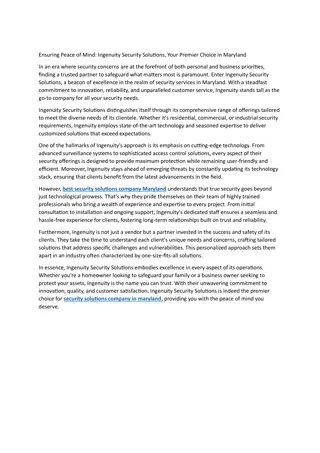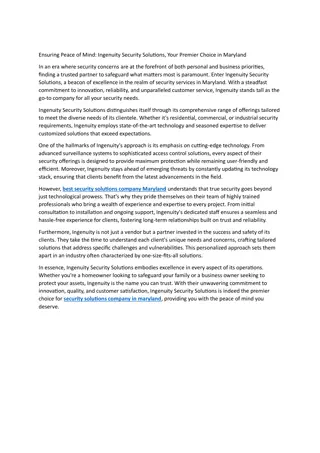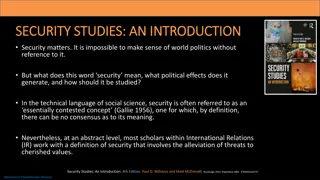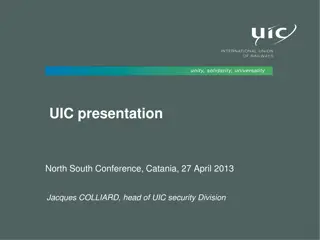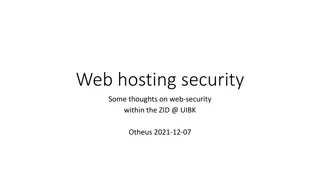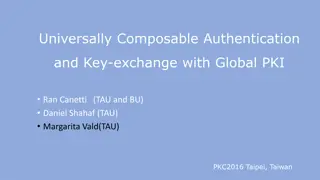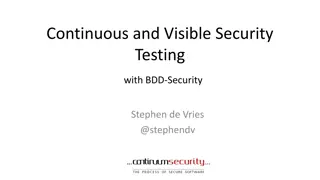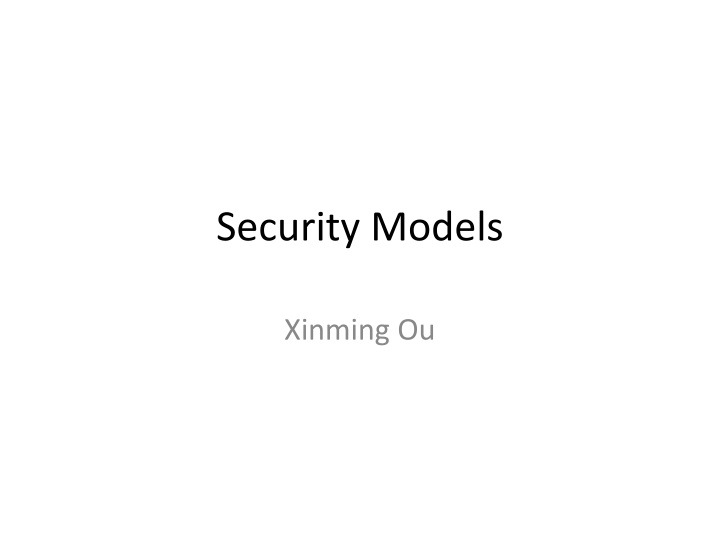
Security Models and Policies in Information Flow Systems
Explore the concepts of security models, policies, and information flow in mandatory access control systems. Learn how to ensure policies are defined correctly to achieve security goals, analyze information flow graphs, and reason about security goals like secrecy and integrity. Discover the importance of secrecy models, lattices, and security classifications in protecting information.
Download Presentation

Please find below an Image/Link to download the presentation.
The content on the website is provided AS IS for your information and personal use only. It may not be sold, licensed, or shared on other websites without obtaining consent from the author. If you encounter any issues during the download, it is possible that the publisher has removed the file from their server.
You are allowed to download the files provided on this website for personal or commercial use, subject to the condition that they are used lawfully. All files are the property of their respective owners.
The content on the website is provided AS IS for your information and personal use only. It may not be sold, licensed, or shared on other websites without obtaining consent from the author.
E N D
Presentation Transcript
Security Models Xinming Ou
Security Policy vs. Security Goals In a mandatory access control system, the system defines security policy to achieve security goals Policies cannot be bypassed or changed by users (processes) How to ensure the policies are defined correctly, i.e., the security goals are actually achieved
Information Flow When a subject s reads an object o, information flows from o to s. When a subject s writes to an object o, information flows from s to o.
Information Flow Graph Information flow graph for a protection state Directed graph G = (V,E) where: (1) the set of vertices V includes all subjects and objects in the protection state, and (2) the set of directed edges E consists of each read and write information flow in the protection state.
Example Source: Operating system security, Jaeger 08, Morgan & Claypool
Use Information Flow Graph to Reason about Security Goals Secrecy Can data be leaked from one subject/object to another subject/object? Integrity Can subject/object of low integrity influence subject/object with high integrity?
Secrecy Model Goal: prevent unauthorized disclosure of information Secrecy model ensures that policies defined according to the model will not result in unauthorized disclosure Only applicable to MAC, not DAC.
Lattice A lattice is formed by a partial order relations
Example Some partial order relations: a The join operator: least upper bound c b e d The dominance relation:
Secrecy Lattice Top secret Nodes are called "security class" -- labels assigned to objects and subjects Secret Partial order represents the can flow relation Confidential Unclassified
Bell LaPadula Model Security labels arranged in linear ordering Top Secret: highest Secret Confidential Unclassified: lowest Labels assigned to subjects: security clearance (SC) Labels assigned to objects: security classification (SC)
BLP Model (MLS) Simple-Security Property (no read up): *-Security Property (no write down):
Labeling State Assignment of labels to subjects and objects happens at the creation time The label must dominate the label of the creating process Labels cannot be changed once assigned
Extension of the MLS model Introduce categories to further differentiate the security class Security class consists of the sensitivity level (top secret, secret, confidential, unclassified) and zero or more categories. Secret: MIL Top secret: ST Secret: MIL+ST Top secret: NONE
Extension of the MLS model All categories form a lattice as well MIL+ST ST MIL NONE
Extension of the MLS model Security class has the form of l: c, where l is the sensitivity level and c is the category Example: Secret: None Topsecret: MIL Secret: ST Secret: MIL+ST Secret: MIL Topsecret: MIL
Integrity Model Goal: Ensure that processes of high integrity do not depend on/are not influenced by those with low integrity Integrity goal can be mapped to information flows: Objects with low integrity cannot flow into subjects with high integrity
Biba Integrity Model Simple-Integrity Property (read up): *-Security Property (write down):
Integrity Classification E.g., System Middleware Application User










